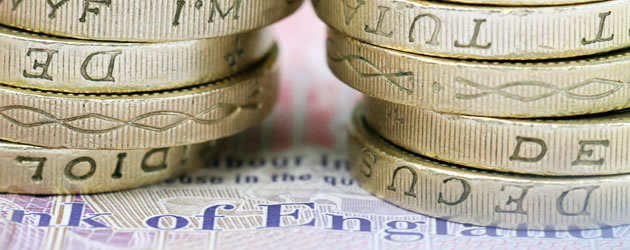- Stronger second quarter UK GDP failed to shore up Pound – Odds of imminent BoE action remained heightened
- Euro boosted by positive Eurozone data – German and Spanish economies demonstrated robustness
- Fed left interest rates unchanged at latest policy meeting – US Dollar softened as speculation continued over likelihood of 2016 rate hike
- GBP USD exchange rate forecast to weaken further – Upcoming US GDP and Personal Consumption data predicted to be bullish
Stronger German Inflation Weighed on GBP EUR Exchange Rate
Demand for the Euro (EUR) was boosted further on Thursday afternoon by the news that the German Consumer Price Index had bettered expectations in July. Inflation was found to have climbed from 0.3% to 0.4% on the year, suggesting greater strength within the Eurozone’s powerhouse economy. As a result the GBP EUR exchange rate trended lower in the region of 1.1850.
Pound Sterling (GBP) exchange rates, meanwhile, were feeling increasing pressure as Bank of England (BoE) official David Blanchflower indicated that the central bank could cut rates into negative territory in order to strengthen the UK economy post-Brexit.
(Previously updated at 10:45 on 28/07/2016)
The appeal of the Pound remained muted on Thursday morning, with concerns over the outlook of the UK economy setting the GBP EUR and GBP USD exchange rates on a fresh downtrend.
Brexit-Based Uncertainty Continued to Weigh on Pound (GBP)
Although the headline second quarter UK GDP figure bettered expectations this was not enough to boost the Pound (GBP) on Wednesday. Markets were more concerned by the underlying implications of the report, which showed that almost the entirety of the 0.6% quarterly growth had occurred in April. With both May and June showing a significant stalling in strength investors were inclined to look forward to the post-Brexit economy with greater cautiousness, particularly given the weakness of economic data compiled in the wake of the referendum. As a result this didn’t do anything to lower the odds of the Bank of England (BoE) cutting interest rates at its policy meeting next week, maintaining downside pressure on Sterling.
The mood towards the Pound remained bearish on Thursday as investors continued to price in the odds of imminent BoE action. A better-than-expected Nationwide House Prices figure for July failed to offer any particular rallying point, with the impact of Brexit-based uncertainty likely to weigh increasingly on the house market in the coming months. This negative outlook was seemingly confirmed by the UK’s largest estate agent group Countrywide, which issued a profit warning with a caution that the market had slowed materially ahead of the referendum. Consequently the Pound ceded further ground to its rivals.
GBP EUR Exchange Rate Slides on the Back of Stronger Eurozone Employment Data
A stronger-than-expected German GfK Consumer Confidence Survey for August helped to shore up the Euro (EUR) somewhat yesterday. This seemed to suggest that the impact of recent market volatility on sentiment in the Eurozone’s powerhouse economy had been minimal, offering encouragement that the outlook is more robust. Investors also reacted positively to the news that the latest Spanish Retail Sales figures had markedly bettered forecast, jumping from 2.3% to 5.6% on the year in June. Although the day’s data was generally positive, however, the appeal of the single currency was somewhat muted by the relative strength of the US Dollar (USD).
Thursday morning saw the common currency boosted by further bullish Eurozone data, with Spanish unemployment falling to a six-year low of 20%. While the figure remains decidedly higher than markets would like this nevertheless boosted the Euro, particularly as the German job market also showed signs of tightening. In July the number of unemployed dropped by 7,000, a larger number than forecast even though it failed to shift the domestic Unemployment Rate. Altogether this boosted demand for the Euro, despite ongoing concerns over potential economic and political flashpoints developing within the currency union.
US Dollar (USD) Bullishness Forecast as Odds of 2016 Fed Hike Remain High
Data from the US continued to muddy the waters on Wednesday, with the latest Durable Goods Orders result proving substantially weaker than markets had anticipated. Even though the world’s largest economy has been demonstrating signs of strength in recent weeks the picture remains less-than-clear, prompting doubts over the policy outlook of the Federal Reserve. While there had been no expectation for a change in policy at the Federal Open Market Committee’s (FOMC) July meeting that didn’t prevent the US Dollar (USD) from weakening in response to the lack of hawkish rhetoric on display. However, as analysts at Nomura commented:
‘It is worth noting that Kansas City Fed President George dissented from today’s decision noting that she preferred to raise interest rates today. We expect many FOMC participants to suggest in the coming weeks that their next meeting in September will be a “live” meeting.’
With forecasts pointing towards a significant strengthening in the second quarter GDP and Personal Consumption figures it seems likely that the ‘Greenback’ will recover some measure of strength ahead of the weekend. Should the greater weight of domestic data continue to suggest more robust economic health then investors are likely to pile back into the US Dollar, with the odds of a 2016 interest rate hike expected to remain relatively high in response.
Current GBP, EUR, USD Exchange Rates
At the time of writing, the Pound to Euro (GBP EUR) exchange rate was slumped around 1.1891, while the Pound to US Dollar (GBP USD) pairing was trending lower in the region of 1.3216.



